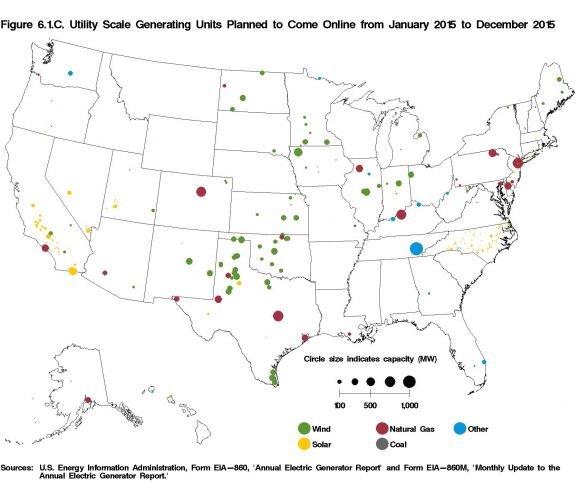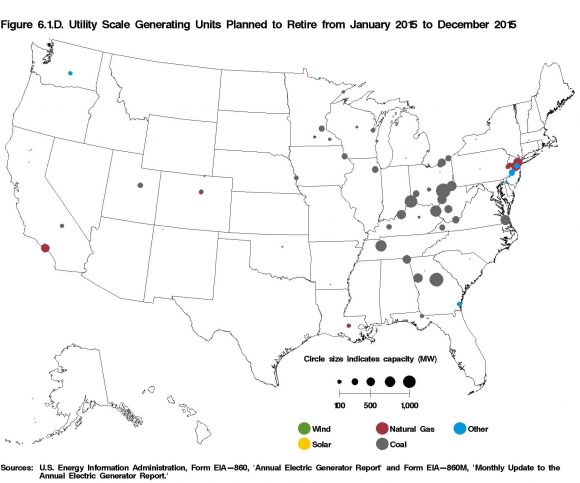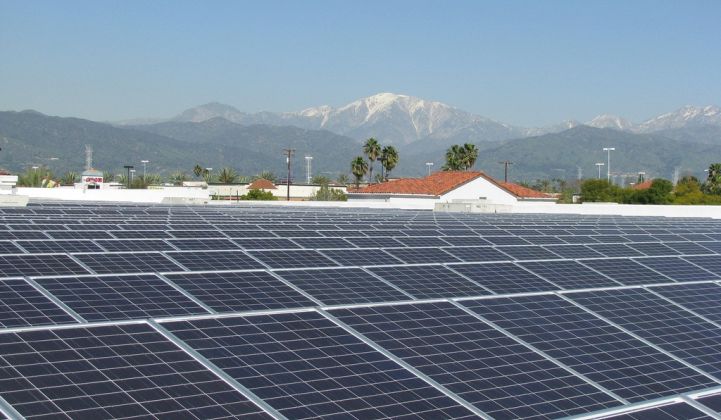New federal statistics out this week have shed more light on solar and wind energy’s emerging role in keeping the country’s lights on. According to the U.S. Energy Information Administration, 2014 saw non-hydro renewable energy generation increase by 11 percent over the previous year -- and solar power led the charge in growth, if not in overall share of U.S. electricity supply.
According to EIA’s new Electric Power Monthly report (PDF), solar photovoltaic systems generated 15,874 gigawatt-hours of power last year, up from 8,121 gigawatt-hours in 2013. Solar thermal generation grew even faster, if from a smaller base, from 915 gigawatt-hours in 2013 to 2,447 gigawatt-hours in 2014.
But the EIA doesn’t track new generating systems smaller than 1 megawatt in size, meaning that the country’s share of solar PV last year is likely much higher if new distributed and rooftop solar were to be taken into account. GTM Research data shows that residential and commercial PV systems have accounted for the majority of new solar being installed through the previous year.
Solar PV’s share of electricity supply still lags far behind wind power, which generated 181,179 gigawatt-hours in 2014, up from 167,840 gigawatt-hours in 2013. But solar is growing much faster than wind power. Meanwhile, solar and wind power are leading all forms of renewable energy besides hydropower, including biomass, wood-derived fuels and landfill gas, to outpace hydropower as the country’s primary source of renewable energy, according to EIA projections.
Meanwhile, natural-gas-fired generation actually dropped slightly last year, although new natural-gas-fired power plants planned for construction in 2015 could reverse that trend. At the same time, new solar and wind power projects planned to come on-line this year far outnumber new gas-fired power plants, as this map from EIA’s report shows.

This year will also see the retirement of a large number of coal-fired power plants, a trend that will be accelerated by the passage of U.S. Environmental Protection Agency rules aimed at cutting carbon dioxide emissions by 30 percent below 2005 levels by 2030. Whether or not that rule will weaken the reliability of the electricity system is the subject of vigorous debate.

Solar still made up less than one-half percent, and wind power only 4.4 percent, of the country’s electricity mix last year. But the trends are clearly moving them into a far more important role -- particularly in states such as California and Hawaii, where they’re starting to have a significant impact on how utilities and regulators are managing the power grid.



